Marshall VitageModern 2466 Handleiding
Marshall
Gitaarversterker
VitageModern 2466
Bekijk gratis de handleiding van Marshall VitageModern 2466 (4 pagina’s), behorend tot de categorie Gitaarversterker. Deze gids werd als nuttig beoordeeld door 47 mensen en kreeg gemiddeld 4.8 sterren uit 24 reviews. Heb je een vraag over Marshall VitageModern 2466 of wil je andere gebruikers van dit product iets vragen? Stel een vraag
Pagina 1/4


From Jim Marshall
I would like to thank you personally for selecting one
of our new ‘Vintage Modern Series’ amplifiers.
I have always believed that the most important
aspect of a musician's choice of amplification is the
fundamental tone it produces. Truly experienced
electric guitar players, and I have known a few, will
look for an amplifier that will enable them to
express themselves with comfortable ease. Music
is a language like any other and serves to
communicate the artists feel and emotion to their
audience. A guitarist is capable of translating a
universe of subtle nuances, dynamics, aggression,
restraint and touch to the appreciative listener. This
is the philosophy behind our Vintage Modern series
of amplifiers.
Over the years I have witnessed several trends in
guitar amplification and take great interest in keeping in
touch with peoples comments and opinions from all
generations. In doing so I have found that we must move
with technology in order to take advantage of the rapid
advances in our industry, as well as preserving the classic
Marshall tones of yesteryear that have been the keystone of my
company’s success. The amplifier you have just purchased is a
marriage of vintage 60s and 70s tone to a feature set found on our
more current ranges.
This amplifier is designed to react to the player’s human dynamic in conjunction with judicious
use of the guitar’s volume and tone controls, as exemplified by many iconic guitar heroes
who mastered this art. It has been designed to deliver the goods no matter what your style,
instrument or musical genre. I hope you enjoy the voyage of tonal discovery on which you are
about to embark and continue to do so for many years to come.
Yours Sincerely,
Overview
ENGLISH
Dr Jim Marshall OBE and daughter
Victoria (Managing Director)

2
1. Power Switch
This is the On/Off switch for the mains electric
power to the amplifier.
Note: Please ensure the amplifier is switched off
and unplugged from the mains electricity supply
whenever it is moved!
2. Standby Switch
The Standby Switch is used in conjunction with the
Power Switch (1) to ‘warm up’ the amplifier before
use and to prolong the life of the valves. When
powering up the amplifier always engage the Power
Switch (1) first, leaving the Standby switch in the
‘OFF’ position. This enables the heater voltage,
allowing the valves to come up to their correct
operating temperature. After approximately two
minutes the valves will have reached their correct
operating temperature and the Standby Switch can
be engaged, enabling the HT. In order to prolong
valve life, the Standby Switch alone should also be
used to turn the amplifier on and off during breaks in
a performance. Also, when switching the amplifier
off, always disengage the Standby Switch prior to
the main Power Switch.
3. Mains Indicator
This purple LED indicator will light up whenever the
amp is plugged into the mains and the Power
Switch (1) is on.
4. Reverb
This controls the level of the internal studio quality
plate emulation reverb that is mixed with the direct
guitar signal.
Note: If the supplied footswitch is not connected,
the reverb is always enabled and can only be
turned off by setting this control fully
counterclockwise if the reverb is not required. If the
footswitch is connected then the reverb can be
toggled on and off allowing the reverb level control
to remain where you set it.
5. Master Volume
This control sets the overall output volume of the
amplifier.
Tonal tip: It is practical to set this first to suit the
venue in which you are playing as the position of
this volume largely dictates the optimum positions
for the other controls.
Tone Controls
6. Presence
This control operates in the power amp section of
your amp and adds high frequencies to your tone,
creating crispness and bite. As you turn this control
up (clockwise), your sound will become more
cutting.
7. Bass
This controls the amount of low frequencies (bottom
end) in your tone.
8. Middle
This controls the mid-range of your sound. Turning
this up (clockwise) will make your guitar sound fatter
and fuller.
9. Treble
This control determines the amount of treble and
gives your guitar tone a defining edge as it is turned
up.
Dynamic Ranges: Low and High
This single channel amplifier has provision to switch
between two dynamic ranges.
The low dynamic range is synonymous with our
classic vintage amplifiers in terms of the available
gain. In this mode clean to mild/moderate overdrive
is attainable depending where your guitar volume is
set.
ENGLISH
Front Panel Features (panel shown is 2466 - 2266C Combo panel is reversed)
1 2 3 4 5 6 7 8
Product specificaties
| Merk: | Marshall |
| Categorie: | Gitaarversterker |
| Model: | VitageModern 2466 |
Heb je hulp nodig?
Als je hulp nodig hebt met Marshall VitageModern 2466 stel dan hieronder een vraag en andere gebruikers zullen je antwoorden
Handleiding Gitaarversterker Marshall

11 Januari 2025

19 Juni 2023

14 Juni 2023

5 Juni 2023

22 Mei 2023

11 Mei 2023

11 Mei 2023

8 Mei 2023

3 Mei 2023

3 Mei 2023
Handleiding Gitaarversterker
- Electro Harmonix
- Fender
- Radial Engineering
- AER
- Hartke
- Laney
- EBS
- Hotone
- Victory
- Yamaha
- Rivera
- Boss
- ART
- Artec
- Budda
Nieuwste handleidingen voor Gitaarversterker
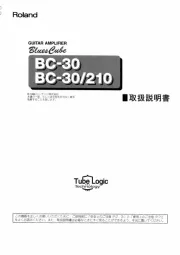
4 September 2025

14 Augustus 2025
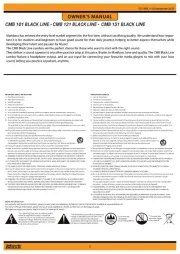
5 Augustus 2025
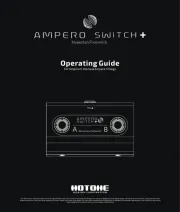
4 Augustus 2025

4 Augustus 2025
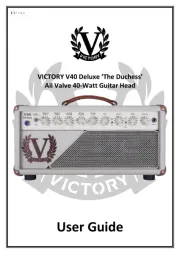
31 Juli 2025
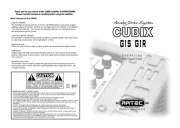
29 Juli 2025

28 Juli 2025

18 Juli 2025
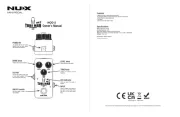
17 Juli 2025